Venomous and non-venomous snakes can often be found in various habitats around the world. While both types of snakes may look similar, they differ significantly in terms of their characteristics and potential danger. It is crucial to be able to differentiate between venomous and non-venomous snakes in order to ensure your safety in snake-prone areas. Understanding the distinction between these two types of snakes is of utmost importance.
Venomous snakes, as the name suggests, possess venom that they use to immobilize or subdue their prey. Various types of venomous snakes exist, such as the rattlesnake, cobra, and copperhead. These snakes have certain characteristics that can help distinguish them from their non-venomous counterparts.
On the other hand, non-venomous snakes lack venom and instead kill their prey through constriction or by swallowing them whole. Common types of non-venomous snakes include the garter snake, corn snake, and king snake. These snakes exhibit different physical characteristics that can help identify them correctly.
Being able to identify venomous snakes is crucial for your safety. Physical characteristics, such as head shape, color patterns, and venom delivery systems, can be key differentiators. behavioral cues and geographic distribution can also provide clues to determine whether a snake is venomous or non-venomous. Understanding these distinguishing factors is essential for making informed decisions when encountering snakes.
In the event of a snake encounter, it is important to know how to react appropriately to ensure your safety. By being well-informed about the characteristics of venomous and non-venomous snakes, you can effectively spot the difference and take the necessary precautions to keep yourself and others safe.
Key takeaway:
- Venomous snakes can be identified by their physical characteristics, such as triangular-shaped heads, venomous fangs, and heat-sensing pits.
- Non-venomous snakes lack these physical characteristics and rely on constriction or other means to subdue their prey.
- Geographic distribution is an important factor in differentiating between venomous and non-venomous snakes, as certain species are only found in specific regions.
What Are Venomous Snakes?
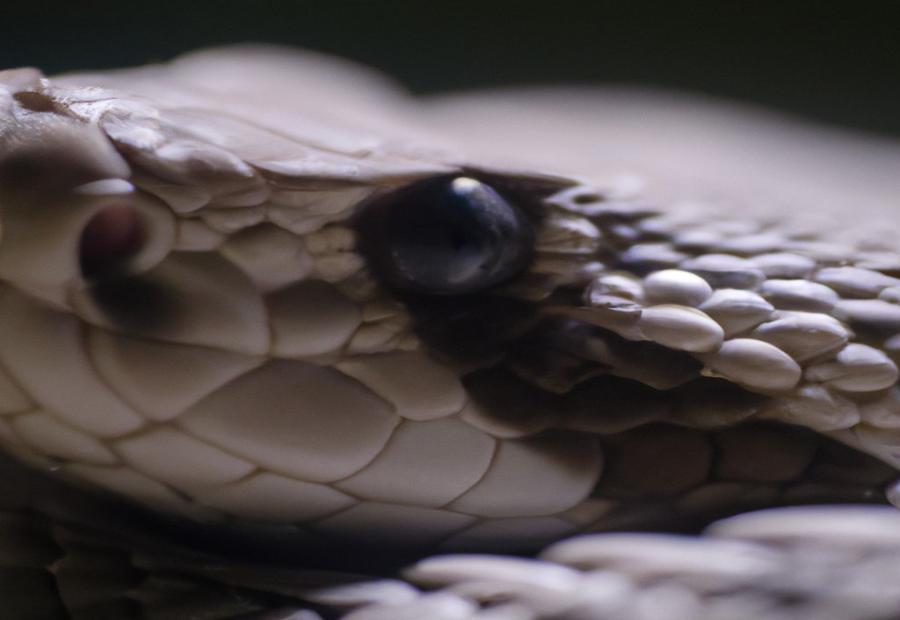
Photo Credits: Ruggedreptiles.Com by Logan Wilson
Venomous snakes are no ordinary reptiles – they possess a lethal secret that sets them apart. In this section, we’ll unlock the mystery of what exactly makes a snake venomous. Prepare to discover the captivating world of deadly serpents as we explore the various types of venomous snakes and uncover the unique characteristics that define them. Get ready to delve into a realm where survival of the fittest takes on a whole new meaning.
Types of Venomous Snakes
–
Pit Vipers: Found in warm climates, these snakes are one of the types of venomous snakes. They have thick bodies, slitted pupils, and less vibrant colors compared to other snakes.
–
Black Mamba Snakes: Highly venomous and known for their aggressive behavior, black mambas belong to the category of types of venomous snakes. They have fast-acting neurotoxic venom.
–
Water Moccasins: Also known as cottonmouth snakes, these snakes are another example of types of venomous snakes. They inhabit southeastern US and have a triangular-shaped head, rounded pupils, and produce a rattling sound.
–
Coral Snakes: As one of the types of venomous snakes, coral snakes are commonly found in the southern parts of the US. They have distinct color patterns and rounded pupils. Their venom is neurotoxic.
–
Copperhead Snakes: These snakes, belonging to types of venomous snakes, have a different coloration that blends well with their surroundings, a triangular-shaped head, and hemotoxic venom.
–
King Cobra Snakes: Considered one of the most venomous snake species, king cobras can be identified by their hood, large size, and distinct coloring. They are one of the types of venomous snakes.
–
Sea Snakes: Venomous and often found in coastal regions, sea snakes also fall under the category of types of venomous snakes. They have paddle-like tails and deliver a potent neurotoxic venom.
–
Pit Viper: This group of types of venomous snakes includes rattlesnakes, copperheads, and cottonmouths. They have heat-sensing pits between their eyes and nostrils.
Characteristics of Venomous Snakes
The distinct characteristics of venomous snakes include the following:
– Pit vipers, such as rattlesnakes and copperheads, are venomous snakes found in North and South America. These snakes have a triangular-shaped head, which is a significant trait distinguishing them from non-venomous snakes.
– Black mamba snakes, native to Africa, are highly venomous. They have smooth scales and possess a slender body, which sets them apart from non-venomous snakes.
– Water moccasins, commonly known as cottonmouth snakes, are venomous reptiles found in the southeastern United States. They feature a dark coloration and a wide, triangular-shaped head as key traits distinguishing them as venomous snakes.
– Coral snakes, found in both North and South America, exhibit colorful bands of red, yellow, and black. They have round pupils and possess a slender body, which are important characteristics of venomous snakes.
– King cobra snakes, found in Southeast Asia, are among the largest venomous snakes. They possess a long body and a hooded, triangular-shaped head, making them easily distinguishable from non-venomous snakes.
Understanding these distinct characteristics is crucial for ensuring safety when encountering snakes in their natural habitats. By recognizing these traits, individuals can better differentiate venomous snakes from non-venomous ones and take appropriate precautions.
What Are Non-Venomous Snakes?
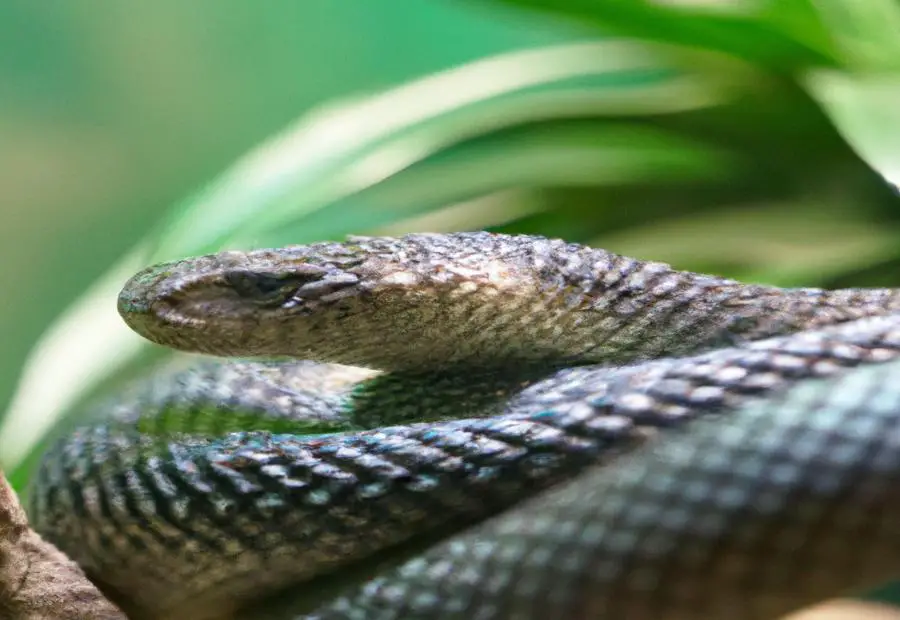
Photo Credits: Ruggedreptiles.Com by Brian Hill
Curious to know more about non-venomous snakes? We’ve got you covered! Take a dive into the fascinating world of these slithering creatures as we explore the different types and characteristics of non-venomous snakes. Get ready to unravel the secrets of their intriguing behavior and discover the distinguishing traits that set them apart from their venomous counterparts. So, buckle up and prepare to embark on a thrilling journey into the realm of non-venomous snakes!
Types of Non-Venomous Snakes
Garter snakes: Found in North America, garter snakes have long bodies with distinctive markings like stripes or spots. Harmless to humans, they mainly consume small amphibians and insects.
King snakes: These snakes are capable of eating other snakes, including venomous ones. They come in a variety of colors and patterns, with some species displaying vibrant red, yellow, and black markings. King snakes are found in North and South America and are non-venomous.
Corn snakes: These snakes are popular as pets and are native to the southeastern United States. Typically orange or brown with black markings, corn snakes are non-venomous and prey on small mammals, birds, and other reptiles.
Rat snakes: Common in North America and Asia, rat snakes are named for their diet of rodents. They typically have a brown or black coloration with a slender body. Playing a crucial role in controlling rodent populations, rat snakes are non-venomous.
Green snakes: Also known as grass snakes, these slender snakes are found in various parts of the world. They are typically bright green and blend well with their surroundings. Green snakes are non-venomous and feed on insects and small vertebrates.
Characteristics of Non-Venomous Snakes
Non-venomous snakes possess a number of characteristic features. Firstly, they have a round-shaped head. Additionally, these snakes are smaller in size when compared to their venomous counterparts. It is worth noting that non-venomous snakes do not possess any venom glands or produce venom. Moreover, they have a single color pattern throughout their body, with no variation. Unlike some venomous snakes, they lack a tail rattle. Another distinguishing feature is their smooth scales, which give their skin a shiny appearance. In terms of behavior, non-venomous snakes tend to be less aggressive and more likely to flee when faced with danger, rather than attacking.
This is a fascinating fact: approximately 70% of snake species worldwide are non-venomous. This is crucial as these snakes play a vital role in maintaining balanced ecosystems by controlling populations of small mammals and insects.
How to Identify Venomous Snakes?
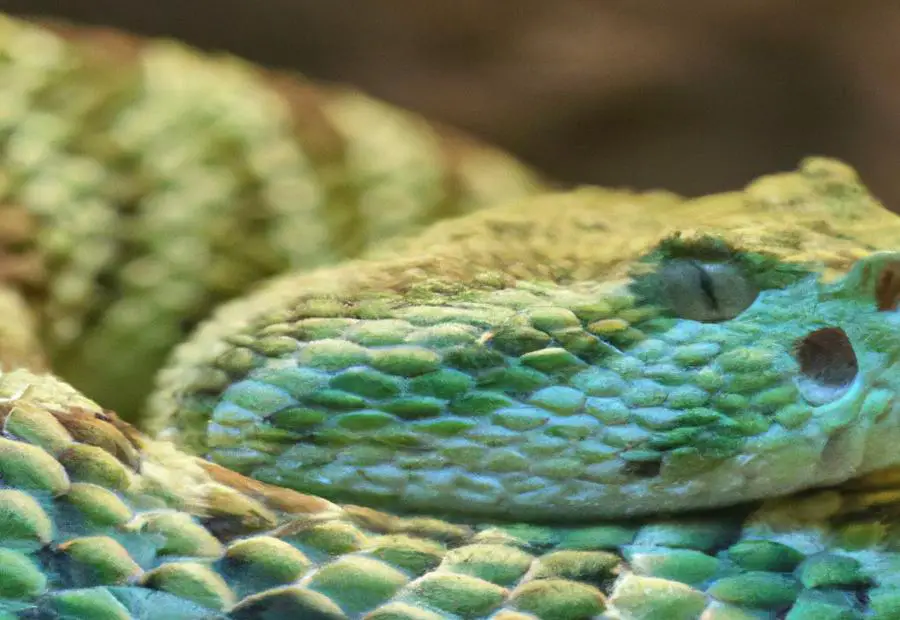
Photo Credits: Ruggedreptiles.Com by Gregory Johnson
When it comes to identifying venomous snakes, there are a few key factors to look out for. In this section, we’ll dive into the physical characteristics, behavioral cues, and geographic distribution that can help you differentiate between venomous and non-venomous snakes. Get ready to arm yourself with the knowledge you need to stay safe in snake territory.
Physical Characteristics
Physical Characteristics of Venomous Snakes:
- Triangular-shaped head
- Pupils with slits
- Venom glands
- Heat-sensitive pits on the face (pit vipers)
- Long and hollow fangs
- Brightly colored skin
- Thick bodies
- Defensive mechanism (rattling tail)
Physical Characteristics of Non-Venomous Snakes:
- Rounded head
- Rounded pupils
- No venom glands
- No heat-sensitive pits
- Non-venomous snakes have solid teeth
- Less colorful
- Thinner bodies
- No rattling tail
Understanding these physical differences can help identify venomous and non-venomous snakes. This knowledge is crucial for public education and peace of mind. By recognizing these characteristics, individuals can better assess the presence of venomous snakes and take appropriate precautions.
Behavioral Cues
Behavioral cues are crucial for distinguishing between venomous and non-venomous snakes. By observing certain behaviors, you can determine the potential danger a snake may pose.
|
Behavioral Cues |
|
Venomous Snakes |
|
• Venomous snakes exhibit defensive behavior when threatened. They may coil their bodies, hiss or rattle their tails as a warning. |
|
• They may also strike or lunge forward if threatened or cornered. |
|
• Pit vipers, like other venomous snakes, have a defensive mechanism of striking and injecting venom through their fangs. |
|
Non-Venomous Snakes |
|
• Non-venomous snakes are typically less aggressive when confronted. They may try to escape or hide instead of engaging in defensive behavior. |
|
• Black rat snakes or garter snakes, for example, may release a foul odor or musk as a defensive tactic. |
Understanding these behavioral cues significantly contributes to your safety and helps you respond appropriately when encountering a snake. By paying attention to their behavior, you can make an informed decision about the potential risk they pose.
It’s important to note that while behavioral cues provide valuable information, they should always be considered alongside physical characteristics and geographic distribution when identifying snakes. By combining these factors, you can develop a comprehensive understanding of snakes and confidently differentiate between venomous and non-venomous species.
In addition, the University of Chicago offers egyptology courses through its Oriental Institute Museum, providing an opportunity to learn about ancient civilizations. This educational institution continues to contribute to public education and the dissemination of knowledge for the benefit of its students and the wider community.
Geographic Distribution
Geographic distribution plays a crucial role in distinguishing between venomous and non-venomous snakes. The table provided below gives an overview of the geographic distributions of different snake species across various regions:
– Venomous Snakes:– Pit Vipers: These snakes can be found in North and South America, Africa, and Asia.
– Black Mamba: This snake species is native to sub-Saharan Africa.
– Water Moccasins: Primarily located in the southeastern United States.
– Coral Snakes: Found in North, Central, and South America.
– Copperhead Snakes: Their habitat ranges across the eastern and central parts of North America.
– Common non-venomous snakes: These snakes are found worldwide, including regions such as North and South America, Europe, Africa, Asia, and Australia.
– Various non-venomous snake species: Native to specific regions like the Rat Snake in North America, the Green Tree Snake in Australia, and the Smooth Snake in Europe.
– Corn Snakes: These snakes can be found in North America.
– Garter Snakes: Found in North America and parts of Central America.
– King Snakes: Their habitat encompasses North and Central America.
Understanding the geographic distribution and physical characteristics of venomous and non-venomous snakes is essential to ensure safety and peace of mind during outdoor encounters. Recently, a friend of mine had a close encounter with a snake while hiking. Initially, the snake’s triangular-shaped head and vibrant colors raised concerns about its venomous nature. However, by maintaining a safe distance and observing from afar, he discovered it was a harmless king snake, which is well-known for mimicking venomous coral snakes. This experience highlights the importance of knowledge about snake distributions and characteristics.
How to Identify Non-Venomous Snakes?
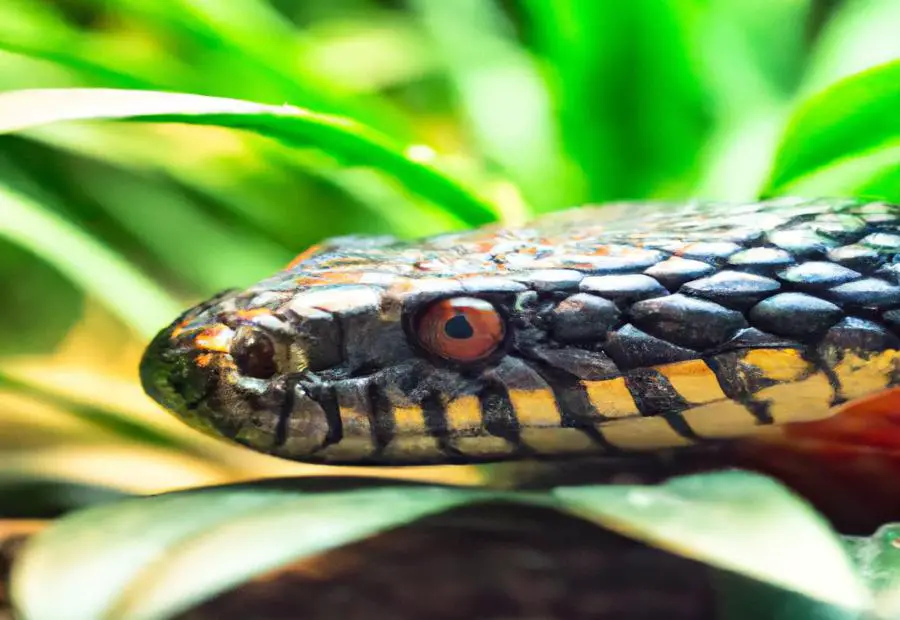
Photo Credits: Ruggedreptiles.Com by Ryan Jackson
When it comes to spotting the difference between venomous and non-venomous snakes, knowing how to identify non-venomous snakes is crucial. In this section, we’ll dive into the physical characteristics, behavioral cues, and geographic distribution that can help you distinguish non-venomous snakes from their venomous counterparts. Don’t worry, we won’t leave you hanging when it comes to discovering these fascinating insights that can keep you safe in snake territory. So, let’s dive in and unravel the secrets of identifying non-venomous snakes!
Physical Characteristics
The physical characteristics of venomous and non-venomous snakes can help differentiate between them. Here are the key physical characteristics of each:
| Venomous Snakes | Non-Venomous Snakes |
| 1. Triangular-shaped head | 1. Rounded head |
| 2. Slit pupils | 2. Rounded pupils |
| 3. Heat-sensitive pits between eyes and nostrils | 3. No heat-sensitive pits |
| 4. Venom glands behind eyes | 4. No venom glands |
| 5. Fangs or hollow teeth | 5. Non-venomous snakes have solid teeth |
| 6. Some venomous snakes have a rattle at the tail | 6. Non-venomous snakes do not have a rattle |
These physical characteristics can help distinguish between venomous and non-venomous snakes. Experts should be consulted for proper identification to ensure accuracy and safety.
Behavioral Cues
Behavioral cues are essential in distinguishing between venomous and non-venomous snakes. It is important to look out for the following key behavioral cues:
- Aggression: When threatened, venomous snakes exhibit aggressive behavior by hissing, striking, or coiling.
- Retreat: Non-venomous snakes, on the other hand, retreat and sense danger by slithering away or seeking shelter in nearby vegetation or crevices.
- Defensive behaviors: Venomous snakes have defensive mechanisms such as rattling or spreading hoods and hissing.
- Body language: Venomous snakes have distinct body movements characterized by swaying side to side or using their tails in a specific manner.
- Hunting strategies: Venomous snakes utilize venom to immobilize or kill prey, employing methods such as strike-and-release or bite-and-hold.
- Tail shape: While some non-venomous snakes have tapered tails, venomous snakes’ tails remain thicker.
Always remember to observe snakes from a safe distance and avoid provoking or handling them. If you are unsure whether a snake is venomous, it is best to leave it alone and seek professional assistance if needed.
Geographic Distribution
Geographic distribution plays a significant role in determining the habitats and climates of venomous and non-venomous snakes. These snakes are distributed across various parts of the world, including North America, South America, Africa, Australia, and Asia.
Venomous snakes, such as pit vipers like rattlesnakes and copperheads, can be found in North and South America. Black mamba snakes are predominantly found in sub-Saharan Africa. Southeastern United States is home to water moccasins, also known as cottonmouth snakes. Coral snakes have a wide distribution across North America, Central America, and South America. King cobra snakes reside in Southeast Asia and the Indian subcontinent. Sea snakes are known to inhabit the oceans of the Indo-Pacific region.
On the other hand, non-venomous snakes have a globally wider distribution and can be found in almost every part of the world, including North America, South America, Africa, Europe, Asia, and Australia. They thrive in diverse habitats like forests, grasslands, deserts, and wetlands.
It should be noted that although geographic distribution provides a general understanding of where these snakes can be found, certain species may have limited ranges within these regions. Additionally, factors like climate, prey availability, and other ecological aspects influence the presence and abundance of both venomous and non-venomous snakes in specific areas.
What to Do If You Encounter a Snake?
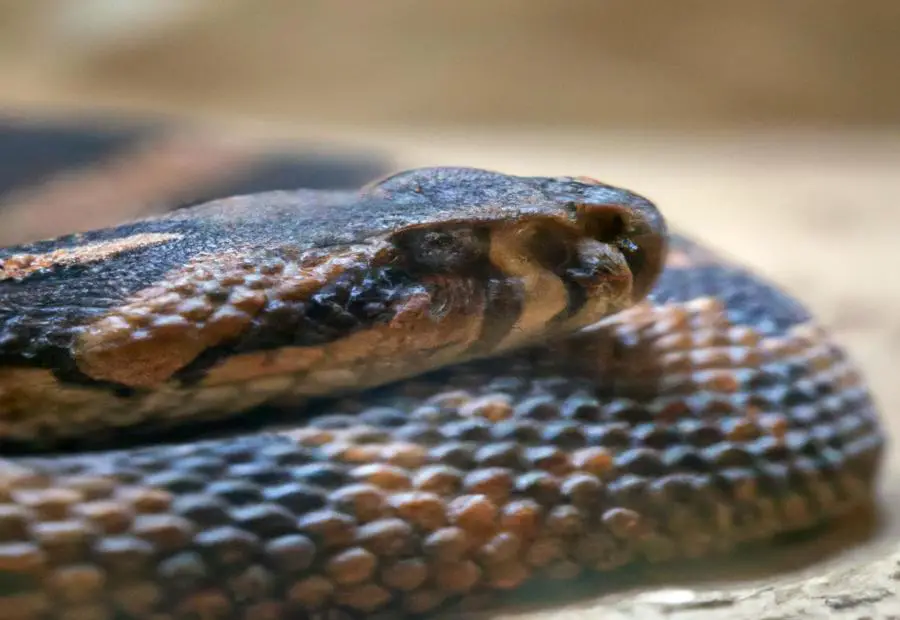
Photo Credits: Ruggedreptiles.Com by Elijah Lopez
Encountering a snake? If you find yourself in a situation where you come face to face with a snake, it’s important to stay calm and follow these steps on what to do if you encounter a snake:
– First and foremost, stop and back away slowly from the snake. It’s crucial to avoid any sudden movements or loud noises that might startle the snake.
– Give the snake space and never attempt to touch or handle it, as this could provoke an attack. It’s best to maintain a safe distance.
– In outdoor settings, it’s advisable to move away from the snake and leave it undisturbed. Snakes generally avoid human presence and are likely to retreat if given the opportunity.
– However, if you find yourself indoors and the snake is in your home or immediate vicinity, it’s recommended to contact a professional snake removal service for safe handling.
– Ensure the safety of children and pets by keeping them away from the snake at all times.
It’s important to remember that most snakes are not venomous and pose little threat to humans. Nonetheless, it is always wise to exercise caution and refrain from assuming a snake is harmless based solely on its appearance.
Fact: Snakes play a crucial role in maintaining ecological balance by controlling rodent populations and serving as a valuable component of the food chain.
Some Facts About Venomous vs. Non-Venomous Snakes: Spotting the Difference:
- ✅ There are over 2,500 different species of snakes found on every continent except Antarctica. (Source: Animal Corner)
- ✅ Less than one-third of all snakes are venomous, and fewer than 300 species may be fatal to humans. (Source: Animal Corner)
- ✅ Venomous snakes have triangular-shaped heads, pupils with slits, and thick bodies, while non-venomous snakes have rounded heads, rounded pupils, and skinnier bodies. (Source: Victor Pest)
- ✅ Rattlesnakes, water moccasins, copperheads, and coral snakes are some of the common venomous snake species in the United States. (Source: Victor Pest)
- ✅ Non-venomous snake species include garter snakes, rat snakes, black racers, and corn snakes. (Source: Victor Pest)
Frequently Asked Questions
How can I spot the difference between venomous and non-venomous snakes based on their head shape?
Venomous snakes typically have a triangular-shaped head, while non-venomous snakes have a round-shaped head.
Do all venomous snakes have pits on their faces?
Yes, venomous snakes have pits on their faces, which are used to detect thermal radiation. Non-venomous snakes, on the other hand, do not have these pits.
What is the significance of the shape of a snake’s pupils in determining its venomous or non-venomous nature?
Venomous snakes have vertical pupils resembling those of cats, while non-venomous snakes have round pupils.
Are there specific markings or colorings that can help me identify a venomous snake?
Yes, venomous snakes often have brightly colored and patterned markings, while non-venomous snakes are typically less colorful and have one solid color.
Do all venomous snakes have rattles on their tails?
No, not all venomous snakes have rattles on their tails. While some venomous snakes, like rattlesnakes, do have rattles, others do not. Non-venomous snakes never have rattles, but some can mimic the sound.
What is the diet of venomous and non-venomous snakes?
Both venomous and non-venomous snakes are carnivores. Their diet includes rodents, small mammals, birds, reptiles, fish, amphibians, insects, and eggs.


